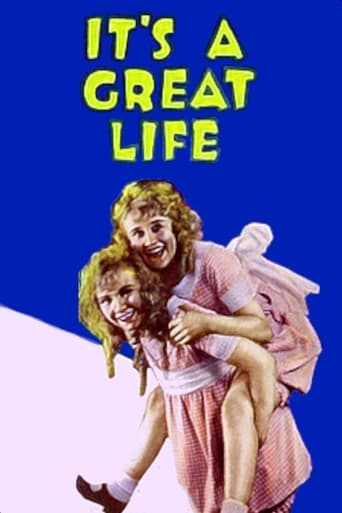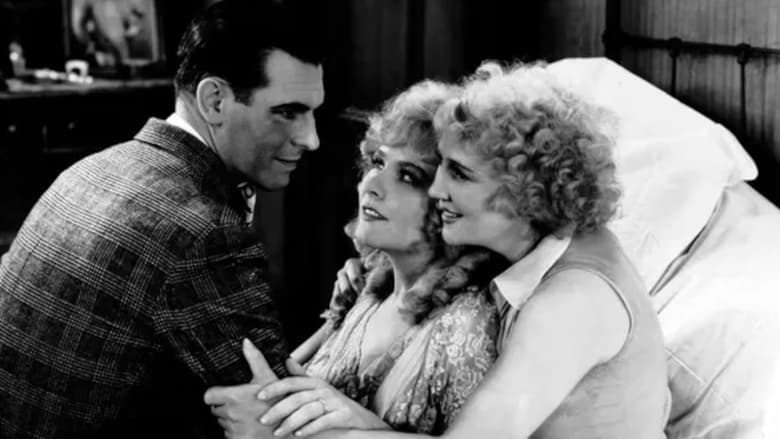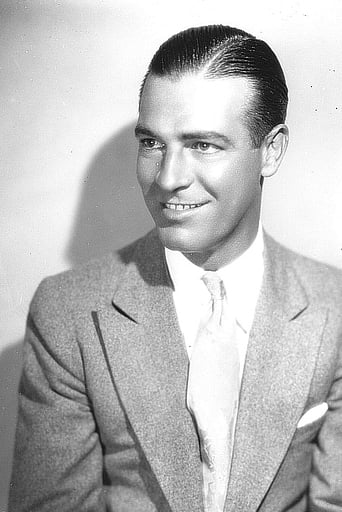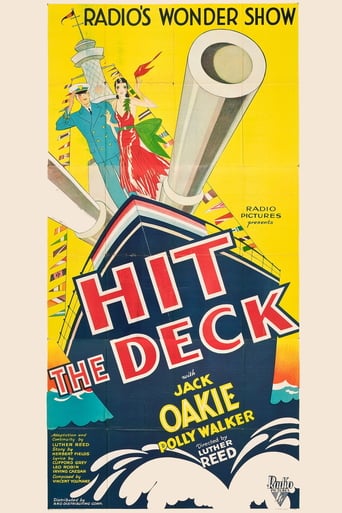

It's a Great Life (1929)
Casey and Babe are sisters who work in a department store and each year the store puts on a show. As expected, things are going wrong with every act until Casey comes out to help Babe with her song. They are a hit, but in the final act, Casey again comes out and this time the president sees her act and fires both her and Babe on the spot. Benny is able to book Casey, Babe and Dean into Vaudeville and their act is popular. But before they have their shot at stardom, Dean and Babe leave Casey and the act.
Watch Trailer
Cast


Similar titles
Reviews
Beautiful, moving film.
A lot of fun.
In truth, there is barely enough story here to make a film.
what a terribly boring film. I'm sorry but this is absolutely not deserving of best picture and will be forgotten quickly. Entertaining and engaging cinema? No. Nothing performances with flat faces and mistaking silence for subtlety.
Rosetta Duncan has to be one of the most annoying actresses I have ever seen. Jed Prouty deserves an academy award for pretending to be in love with this *blank* .... must have been the most difficult acting job in his career. At one point, during the first Technicolor sequence, Lawrence Gray almost kicks Rosetta Duncan....and you can't help wishing he had and right off the stage at that. Rosetta Duncan is about as funny as a room full of cockroaches. The film would have been improved greatly if she had been entirely removed from the cast.Lawrence Gray has a pleasing voice and it is a shame he doesn't get to sing more.. and he is really the only reason I don't give this picture a 1. His rendition of "Following You" and "I'm Sailing on a Sunbeam" (the second in Technicolor) are the highlights of the picture. Vivian Duncan has a pleasant voice, but she is unfortunately drown out by her annoying sister's croaks. Benny Rubin is pretty much wasted in his tiny part.
I first heard about this film aback in the lat 70's when i check out a book ," the m.g.m. story. It was a huge book. I saw years and years later a bad faded version. That had 4 early Technicolor sequences . One I would learn later was not a part of the film .It was from lost film ,"Red hot rhythm. with Alan hale s.r. doing a song and dance number. This was a version of the movie that was privately owned by Rosetta Duncan. She obviously knew about nitrate and color fading and preserved it in a cool storage. Thanks to her we got this film. The rogue song was stored carelessly. There's only two clips and a faded trailer.Well I learned in that in the early 90's before t.c.m. tn.t.. had this version on. I used to watch T.n.t, how did I miss it? Well T. c. M. had a version in which the last final of the Technicolor musical sequence was edited out as well as the red hot rhythm. The real disturbing part about the version on t.n.T. was that the finale number of the last color sequence was enhanced . They made the chorus girls feathers colorized to blue making that whole final looking like three strip. Making it uneven. This revisionism against history is wrong. This is typical of big corporate greed fearing that some of the audience won't like two color Technicolor , enhancing this to ensure their greedy ratings will be made.m.g.m .u.a did this against Dr, X. and Mystery of the wax museum by the mid 90's out of fear that some of the audience may not understand two strip. I got the d.v.d. version recently . The first color sequence is original. The first finale stays original.But the last of the finale is that enhanced version. I'm disappointed . They did remove red hot rhythm sequence. That wasn't part of the movie to begin with.They should of removed that blue and it would of looked the way it was suppose to look.the way it was made.But m.g.m side of Time Warner is still anti two color cause of greed.The only reason why they didn't enhanced all the sequences cause it was too expensive .In spite of this fault it's still an entertaining film.Which explores the history of Vaudeville , which was dying when this movie was made,in which too struggling sisters, Babe and Casey Hogan, struggle every day.Casey promising her dying mother that she would take care of her young sister.But babe starts to fall for the piano music sheet man , played by Lawrence Gray. but Casey is over protective of her sister. When there store has their show . Casey thinks that the original way of the act stinks. Since Babe is getting nervous, Casey comes in and makes it better. but James ,played by Lawrence, thinks she ruined the show . But it becomes a hit. But Casey and Babe and James are fired. But are rescued by Benny Ruben as the talent manager, puts them on the stage. They are a hit . But James and Casey can't get along.This causes the act too break up and Casey is mad at Babe for marrying James.without all three the individual performers flop.It's when babes get's sick that this united all three. I have gotten a feeling that the original plans for this picture was going to be all Technicolor. But since the Duncan sister weren't known in films and Mayors attitude for color. It was decided just to have 3 sequences only. Lawrence Tibbet was a bigger name than them on the screen. i'm just guessing it. It's still collectible . Warner brother shop dot com and also at amazon.com
Unfortunately, Alexander Gray is not half as engaging in Sam Wood's "It's a Great Life" as he was in "Sally" (1929) in which he romanced Marilyn Miller. Here he is paired with Vivian, the prettier (if less talented) of the Duncan Sisters who turn out to be comedians rather than the single-minded, full-throated singers I always imagined. Rosetta is the real clown of the act, Vivian the straight "guy" who also sings a little. While Gray struggles with his role as Vivian's love interest, Rosetta's romantic partner turns out to be Jed Prouty, who is surprisingly effective, considering he made no less than seven other movie appearances in 1929, including his most well-known role as the stuttering uncle in "Broadway Melody". There are also some effective cameos from the crowds of extras. The first half of the movie is an unalloyed delight. Director Sam Wood certainly gets things off to a really great start. In fact, I nominate it as the best ever opening sequence for a musical. Better still, this M-G-M production, I'm very happy to say, still has its two Technicolor sequences intact (even in the first is printed a little too dark and the second a little too light in the current DVD).
IT'S A GREAT LIFE (Metro-Goldwyn-Mayer, 1929) directed by Sam Wood, is another one of those "Broadway Melody" variations produced during the early sound era, with the plot revolving around the up and down stage career of two singing sisters and a songwriter, in this instance, piano playing composer. What makes this one more natural to MGM's own Academy Award Best Picture winner of "The Broadway Melody" (1929), which starred Bessie Love, Anita Page and Charles King, is that this one features actual sisters in the leads. The sisters in question are The Duncan Sisters. And who are the Duncan Sisters? No, they are not the originators of the franchise of Duncan Donuts. Both blondes, they were popular vaudeville headliners with one previous feature film to their name, the silent production of TOPSY AND EVA (UA, 1927). As a result from viewing IT'S A GREAT LIFE, Rosetta (1886-1959) is best described as the shortest of the two with a flare for comedy in the manner of Winnie Lightner with a sort of raspy voice; Vivian (1899-1986), slightly taller yet prettier, sings and dances, but lacking in acting ability, especially when it comes to heavy dramatics. As with many big names during this period, the Duncan Sisters are virtually forgotten today. It's interesting to point out on how Vivian closely resembles Anita Page at one point with a cross variation to future screen actress Dorothy McGuire. Had IT'S A GREAT LIFE been distributed earlier in 1929 instead of the tail end or early 1930, it might have become an equivalent to "The Broadway Melody," considering how both films are somewhat similar in theme, which makes one wonder if the writers of "The Broadway Melody" story had the Duncan Sisters in mind. Regardless, there were no further Duncan Sisters musicals to follow, indicating that IT'S A GREAT LIFE left little or no lasting impression to 1929 audiences. By the time of its release, musicals were showing signs of decline, thus making their talking debut the final feature film for the Duncans.Synopsis in brief: Set in New York City, the story opens with a chase after two girls are seen running from their apartment building, down the street, and immediately being pursued by a policeman and some passersby, causing some traffic accidents as the girls cross through heavy traffic, ending with them heading into a department store where it is soon revealed that they are late for work. The plot development introduces the Hogan sisters, Casey (Rosetta) as the wisecracking elder sister to Babe (Rosetta). Babe loves Jimmy Dean (Lawrence Gray), with whom she works in the sheet music department. For some reason, Rosetta dislikes Jimmy, which is never revealed why. She always finding fault in him and takes every opportunity to criticize him whenever possible in hope that Babe will become discouraged and forget about him. After getting fired from their jobs following the annual store show by Mr. Mandelbaum for his disapproval of Casey's clowning, the trio make a go for the big time in vaudeville. Although they become successful, things become complicated when Babe marries Jimmy, causing problems in her relationship with Casey, thus breaking up the act. While failures on their own, they all become too stubborn to make the first move and admit their faults, even when one of them becomes seriously ill with pneumonia.The musical program: "Smile, Smile, Smile" (sung by employees); "What the Debutante Must Do" (fashion show sequence in two strip Technicolor), "I'm a Son of a ---." "Lady Love" (sung by Vivian Duncan); "I'm Following You" (sung by the Duncan Sisters); "Smile, Smile, Smile," "I'm Following You," "It Must Be an Old Spanish Custom," "Rigoletto," "It Must as Well Be You," "Let a Smile Be Your Umbrella" (sung by unseen vocalist during dramatic moment); "I'm Following You" (sung by Lawrence Gray); "Dance Number" (performed by Rosetta dressed up like a little Dutch Boy); "Hoosier Hop" (production number in two-strip Technicolor with the Duncan Sisters); and "I'm Following You." With the songs being the main attraction, only "I'm Following You" is quite memorable, even after several reprises.Aside from the aforementioned leads, only Benny Rubin as Benny Friedman, the booking agent, and Jed Prouty (who played the stuttering uncle in "The Broadway Melody" ) as David Parker, the store manager who loves Casey, assume billing in the opening casting credits while others do not.The title to IT'S A GREAT LIFE has been used several times over the years: Paramount (1935) with Joe Morrison; Columbia (1943), as part of the 28 film series featuring "Blondie and the Bumsteads" with Penny Singleton and Arthur Lake, as well as the long forgotten TV comedy series starring Michael O'Shea and Frances Bavier (1953-55).The movie as a whole is really not bad. After it is all over, it'll be hard to get these lyrics, "Wherever you go, whatever you do, I want you to know, I'm following you" out of your head. IT'S A GREAT LIFE may never be categorized as a great early musical, but mostly a curiosity for fans of movies from this particular era as well as a rediscovery look into the careers of the once popular Duncan Sisters. Only the final minutes, highlighted by a Technicolor production number choreographed by Sammy Lee, comes off a bit weak. Once shown on a frequent level on Turner Classic Movies cable channel prior to 1996, it's become more of a rarity today. (** Duncans)







